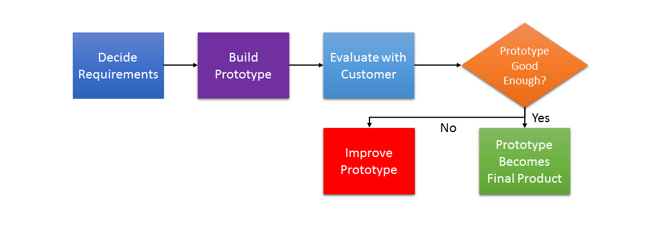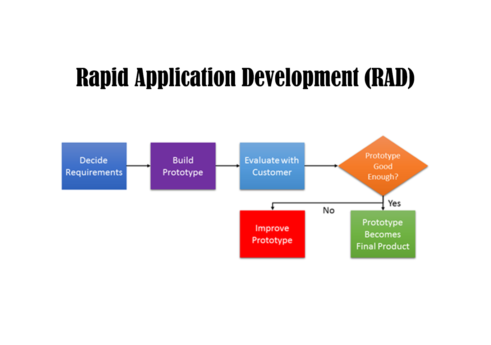Introduction
Rapid application development(RAD) is a part of an agile methodology. It primarily is focused on rapid prototype releases and iterations based on feedback.
Rapid application development (RAD) was invented by James Martin in 1991. It is one of the most popular approaches among the agile methods for fast software development. Rapid application development(RAD) highlights the use of software and feedback over the planning and requirements. RAD was designed as a direct response to the dominant waterfall approach for software development. If any errors are detected in a prototype, they can easily be fixed in the next iteration.
RAD makes easier to incorporate the changes within the development process. In this model, developer build the exact system as the customer requires. The customer can track the development process of the system. RAD can be critical if the requirements are not planed properly. Rapid application development(RAD) projects follow iterative and incremental model and have small teams comprising of developers, domain experts, customer representatives and other IT resources working on prototype.

When to use Rapid application development?
- When you need to track the process of product development.
- When you need your project in short time.
- When you can reliably test your prototypes.
- When you have the budget.
Rapid application development has four phases.
Define requirements
This is the initial phase of software development where the requirements are defined. Although there might be changes in requirements, the initial development must be defined properly. In this phase, developers, users, and other team members connect to determine the goals and expectations for the project. If the requirement is not defined, we might lose some key principles in the future and the product might go off track.
User design
User design is the second most important part of software development. In this phase, the user design is made as per the requirements gathered. Developers design the concept for the prototype. The design is made with the client and developers working together for the software being developed.
Prototype
In this phase, rapid construction takes place. When the requirement is defined and user design is made, it’s time to convert the design into prototypes. The prototype is developed and shown to the clients. If there are any glitches or feedback from the customer, the prototype is changed and next iteration takes where the previous problems are tackled. Developers test, solve all the errors in the product and make it according to the client’s feedback.
Finalize product
In this phase, final changes are made, testing, certain changes are done. Finally, if there are no bugs found in the product and the client is satisfied then the final product is finalized. The new system is built and ready for use.
Benefits and Drawbacks of rapid aplication development model
Benefits
- Flexibility and Adaptability to change.
- It is useful for reducing risk and low cost model.
- Development progress can be measured.
- Code can be reuse.
- Customer satisfaction due to high-level collaboration between developer and client.
Drawbacks
- Requires expert developer and designers.
- It lacks documentation.
- Difficult to manage large scale projects.
- Requires flexible systems.
- Requires user involvement throughout the life cycle of the project.


